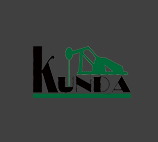 There are probably as many ways to classify artificial lift systems as there are production engineers in the world. As a point of reference, we like to look back each year to Table 1, which we first published in this feature in May 2013. As indicated, we think it makes some sense to organize artificial lift systems into three categories: 1) pump-assisted systems; 2) fluid-assisted systems; and 3) flow enhancement techniques. Within these three categories, there are basically 11 types of lift technologies. In each category, there also exist unconventional or emerging technology types of lift.
There are probably as many ways to classify artificial lift systems as there are production engineers in the world. As a point of reference, we like to look back each year to Table 1, which we first published in this feature in May 2013. As indicated, we think it makes some sense to organize artificial lift systems into three categories: 1) pump-assisted systems; 2) fluid-assisted systems; and 3) flow enhancement techniques. Within these three categories, there are basically 11 types of lift technologies. In each category, there also exist unconventional or emerging technology types of lift.
BEAM/ROD LIFT DEVELOPMENTS
Although electric submersible pump (ESP) systems have surpassed beam/rod pumping as the fastest-growing technology in the artificial lift market, the latter is still the most common form of artificial lift found in oil fields today. The basic beam/rod pump system consists of three components: a surface beam pump, a connecting rod string, and a downhole plunger pump.
LINEAR LIFT PUMP DEVELOPMENTS
For counterbalance, beam pumping units employ large weights placed opposite the sucker rod string. There are several variations to this method:
◆Beam-balanced ◆Crank-balanced ◆Alternative or enhanced geometries with varying forms of counterbalance.
HYDRAULIC JET PUMP DEVELOPMENTS
Recent design developments by JJ-Tech (with distribution and service support from Liberty Lift Solutions) combine the highly versatile Select-Jet pump with a virtually maintenance-free Hydra-Cell T-series diaphragm pump.
More info, pls refer http://www.worldoil.com/magazine/2015/may-2015/special-focus/what-s-new-in-artificial-lift?utm_campaign=Zedi%20SilverJack&utm_content=15220584&utm_medium=social&utm_source=linkedin

Copyright © Longji Network
Contact Us:
Email : info@kundapetro.com
Website: www.kundapetro.com
Address: Shouguang, 262700, Shandong, China

|

